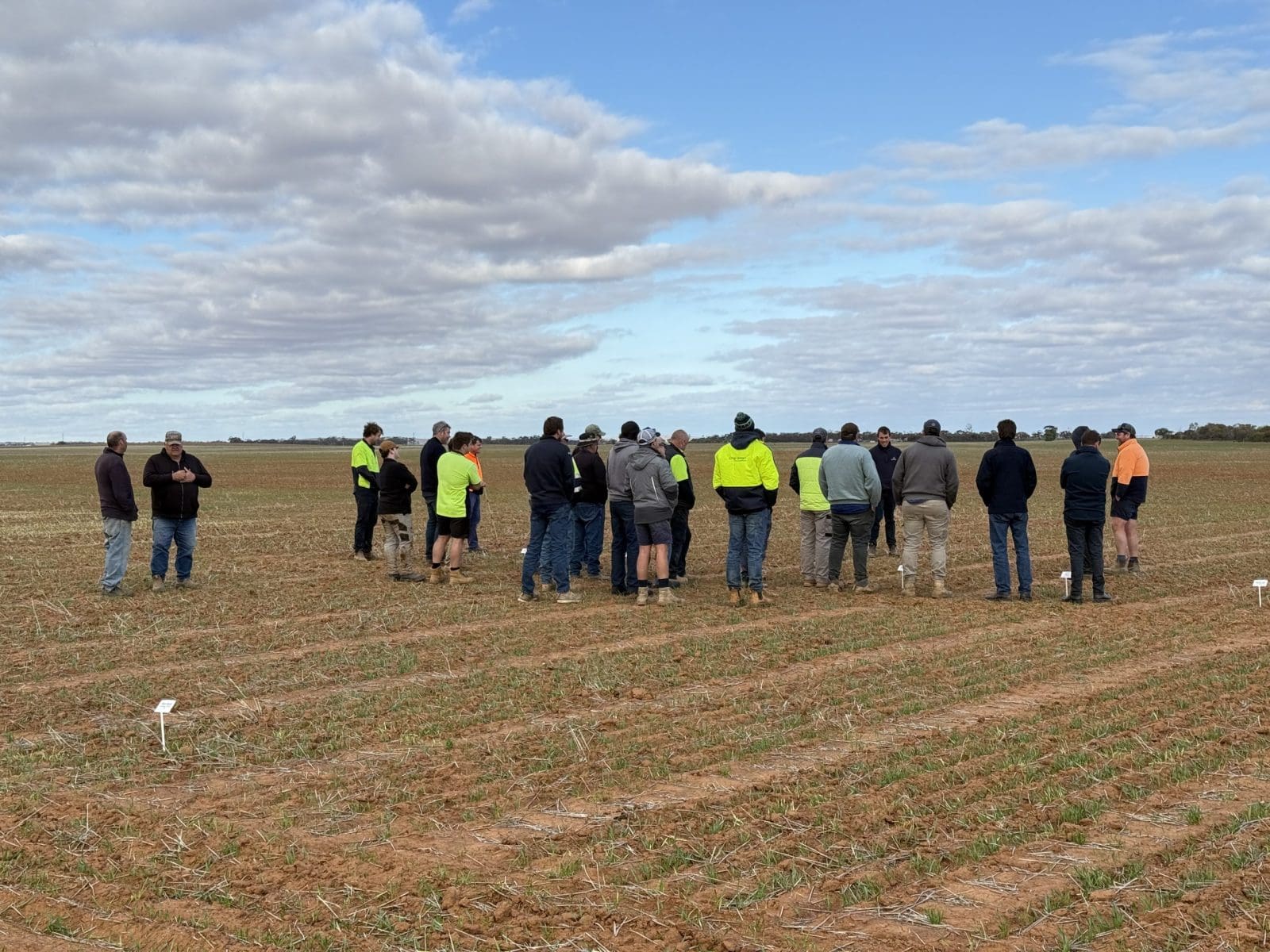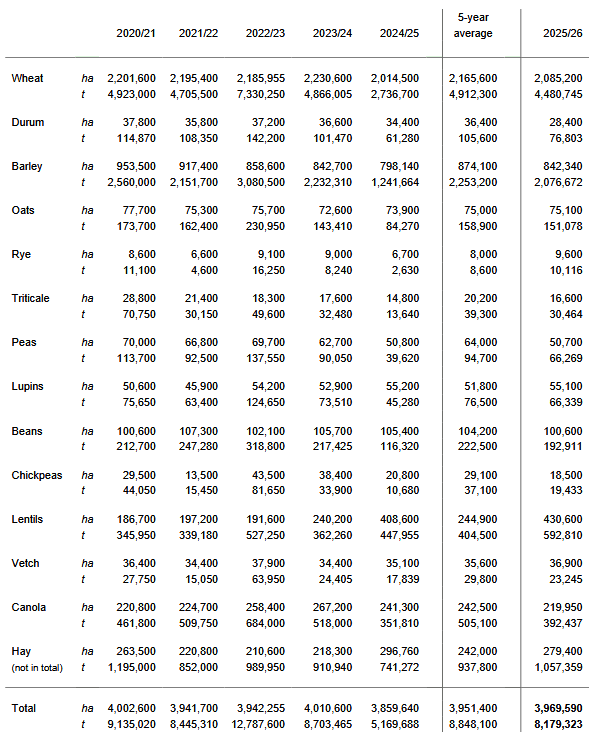
Crops in SA’s Upper North are just getting going after June rain. Photo: Upper North Farming Systems
SOUTH Australia is forecast to produce a winter crop of 8.18 million tonnes, according to the Primary Industries and Regions SA Seeding Intentions report released today.
The figure is based on conditions as of May 15, and compares with PIRSA’s estimate for the harvested 2024-25 crop of 5.17Mt which showed the effect of a lack of opening and/or in-crop rain in many regions.
PIRSA’s forecast for SA’s total winter-crop production is 9 percent above the preliminary ABARES figure of 7.5Mt released in its June 3 Australian Crop Report.
PIRSA is forecasting SA’s new-crop wheat production at 4.48Mt, up from 2.74Mt harvested in 2024-25, and barley at 2.08Mt, up from 1.24Mt last season.
The report forecasts record lentil area and production of 592,810t from 430,600ha, up from a record 408,600ha planted last season that yielded SA’s second-biggest ever lentil crop of 447,955t.
Since the report was written, rain in early June has fallen on mostly dry-sown crops, and planting has largely been completed.
PIRSA’s 2025-26 production estimate is based on yield being close to the 10-year average, and depends on timing of germination and establishment, in-crop rain, and adverse weather events such as heat shocks or frost during flowering and grain fill.
The PIRSA report said the lack of season-opening rains and concerns regarding carry-over residues of some herbicides were likely to result in a reduction of canola, faba bean, chickpea, and durum area being sown.
“These are likely to be substituted with increased areas of wheat and barley primarily,” it stated.
“Lentils are also forecast to increase by an additional 5 percent across the state, firmly establishing them as the third-largest crop area behind wheat and barley.”
PIRSA’s preliminary estimation of cropped area is higher than the 2024-25 season final estimate based on the assumption that less crop will be cut for hay in 2025-26.
The PIRSA report described livestock condition as below average due to minimal available stubble and zero pasture growth during autumn.
“Supplementary feeding and destocking have been essential management strategies to preserve livestock health and soil condition.”
The Bureau of Meteorology’s modelling predicts the El Niño Southern Oscillation, which is currently neutral, to continue until at least November.
The current forecast outlook is for average winter conditions, with no strong signals for either significantly wetter or drier weather.

Source: PIRSA, ABARES

HAVE YOUR SAY